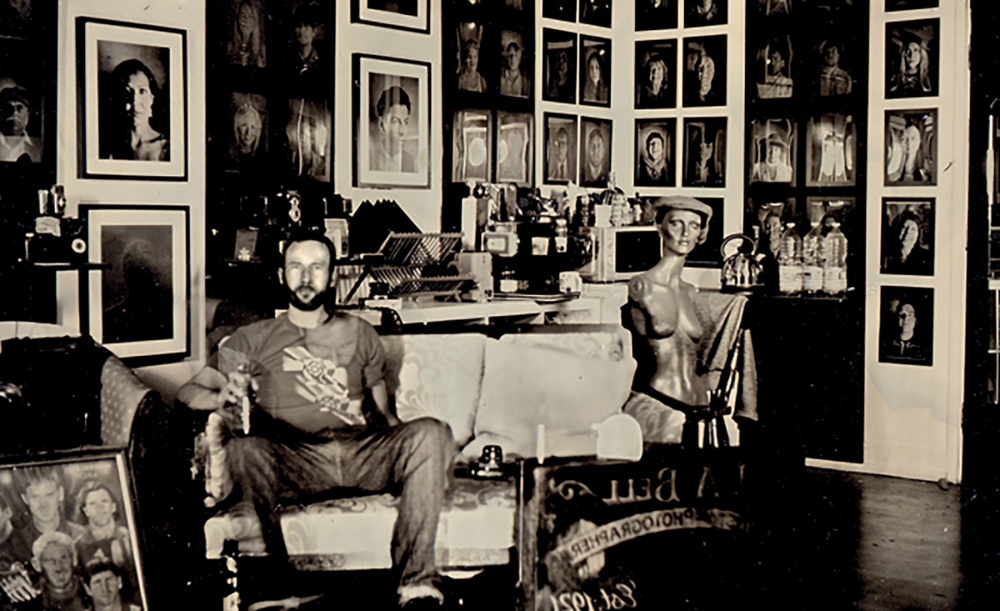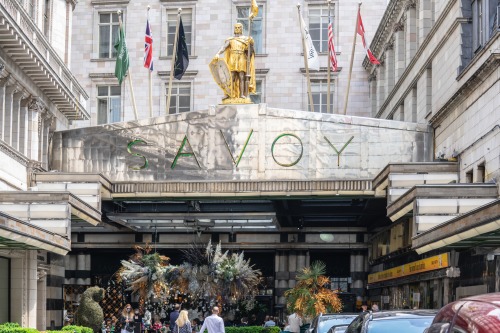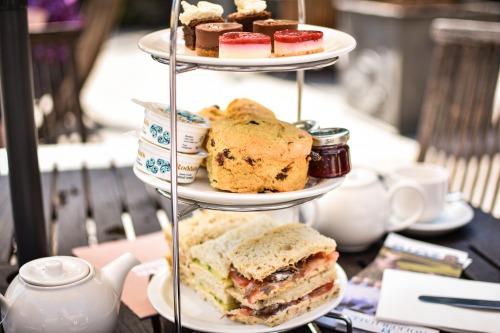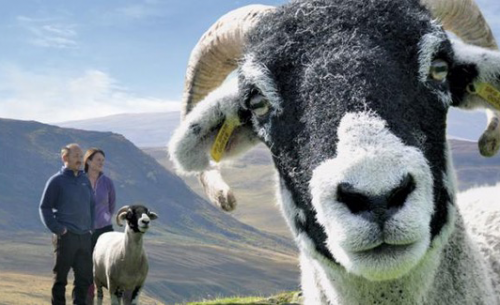Interview with photographer Andy Martin

In a world of Instagram and Photoshop, we met a photographer who has decided his future lies in the techniques of the 19th century
In a modest industrial estate in Sunderland, I appear to have walked into a time warp. Greeted in the lobby by period clocks, old pub signs, antique bicycles (including a tandem) and other obsolete treasures, I spot a mirrored sign bearing the name Silver Sunbeam Photography. The owner, Andy Martin, steps out extending his hand. With the slightest hint of trepidation, I am led through a darkroom lined with shelves of labelled bottles glowing in the dull, red light, to a much more adequately lit studio.
Before you even talk to Andy it is immediately obvious where his fascination lies; the studio is covered wall to wall with framed, old-fashioned portrait photographs. They are all surprisingly uniform for a collection of antique photos, until you look closer and notice the contemporary hairstyles, make-up and clothes. Placed at the far end of the room stand studio lights and a straight-backed, wooden chair with a wooden neck rest bolstered on, surrounded by tables covered in dozens of cameras, from new to old.
Although his day job is website design, Andy’s hobby of wet collodion photography has been taking up most of his spare time for the last six years. The process, which has taken him years to perfect, involves coating a sheet of aluminium with a series of chemicals and placing it in a light-proof plate holder before sliding it into a camera. ‘I‘d heard about the process before’, he tells me, as he slowly rolls some liquid over a square, metal plate. ‘I found this website of a bloke in London called Sean MacKenna. He was the first person in this country to revive the process in the 1990s, so I got in touch with him, went down to his house in London and he showed me the process.’
The wet collodian process is thought to have been created by two people at the same time but separately – Fredick Scott Archer and Gustav Le Gray – in around 1850. The camera Andy is using, however, is from the 1940s. ‘It was a present from an ex-girlfriend, and probably the best thing to come out of that relationship’, he jokes as sets up the camera to take my portrait.
He coats another sheet with chemicals (firstly collodion, followed by a bath of silver nitrate for several minutes to make it light sensitive) and I notice the large ventilation tube working hard just above us. I ask him whether any of the chemicals are dangerous. ‘Well, potentially’, he replies casually. ‘You need pure ethanol, which you have to have a licence to use in this country, and silver nitrate can be pretty explosive. You’ve just got to know what you’re doing.’
Though this process of photography was all the rage in the late 19th century, its drawback is that it requires the preparation, execution and development of the photo all to be done within about 15 minutes. ‘You have to get that exact state of the plate being slightly wet still, but it can’t dry out or it won’t work’.
Born and bred in the North East, Andy began his photography career by taking photos around Sunderland at night, using very long exposures and shooting them all on traditional film cameras. Now he shoots at least an average of two or three portraits per week, but often more – ‘some weeks, we’re talking every day really’. Despite bringing in a sideline income when he takes portraits for people, it really does seem to be a fantastic hobby.
As my own image begins to reveal itself in the developing solution (a bath of Sodium Thiosulphate), a slightly chilling-looking woman with jet black hair and dark circles under the eyes looks back up at me, and I am a little relieved when he offers to take another with brighter lights. ‘Sorry, the couple who sat this morning wanted a “dramatic” look,’ he says apologetically, referring to the position and brightness of the lights in the studio.
As well as taking commissions for people looking for a unique picture of themselves, a lot of Andy’s time more recently has been taken up restoring an old camera. That camera was given to him by the uncle of a friend. ‘It had been in the attic for the 30 years since he’d owned the building and the person who had [the building] before him had it maybe 50 or 60 years, so the chances are it had probably been there for the best part of 100 years untouched, gathering dust and woodworm.’
Deciding to take on the task of restoring the camera, he managed to fix some parts himself, but hit a wall when he discovered the condition of the camera’s bellows. ‘They were just rotten. There’s a company in Birmingham which still makes camera bellows, they’ve been around since the Victorian days, so I got in touch with them and asked them for help.’ Several weeks later the company sent him a new set of bellows and the project was back on track. It has now been successfully restored and Andy has used it to shoot a few plates, but says it’s so expensive to use that he could do with a few more commissions first.
As my second portrait, thankfully a little more flattering than the first, develops, I ask him what he likes so much about the technique. ‘It’s the process itself. I love making something from just some chemicals and a bit of metal – the process never gets old. And I’ve met so many people I just otherwise would never have met. It’s timeless, there is only one copy, no two photos are the same,’ he says. ‘If we sat you there again and set it up in just the same way, we could never recreate that photo exactly.’
The modern knowledge that we can quickly take another, better photo within seconds, or that we can tweak it on editing software, makes us forget that photography originally captured a single moment of time. With Andy’s technique the photos are far more revealing than an entire roll of images, and it requires much more skill. ‘You really have to think about the photos you’re taking’, says Andy. One thing’s for sure, a photograph like this will never be forgotten, lost in the depths of your hard drive.






